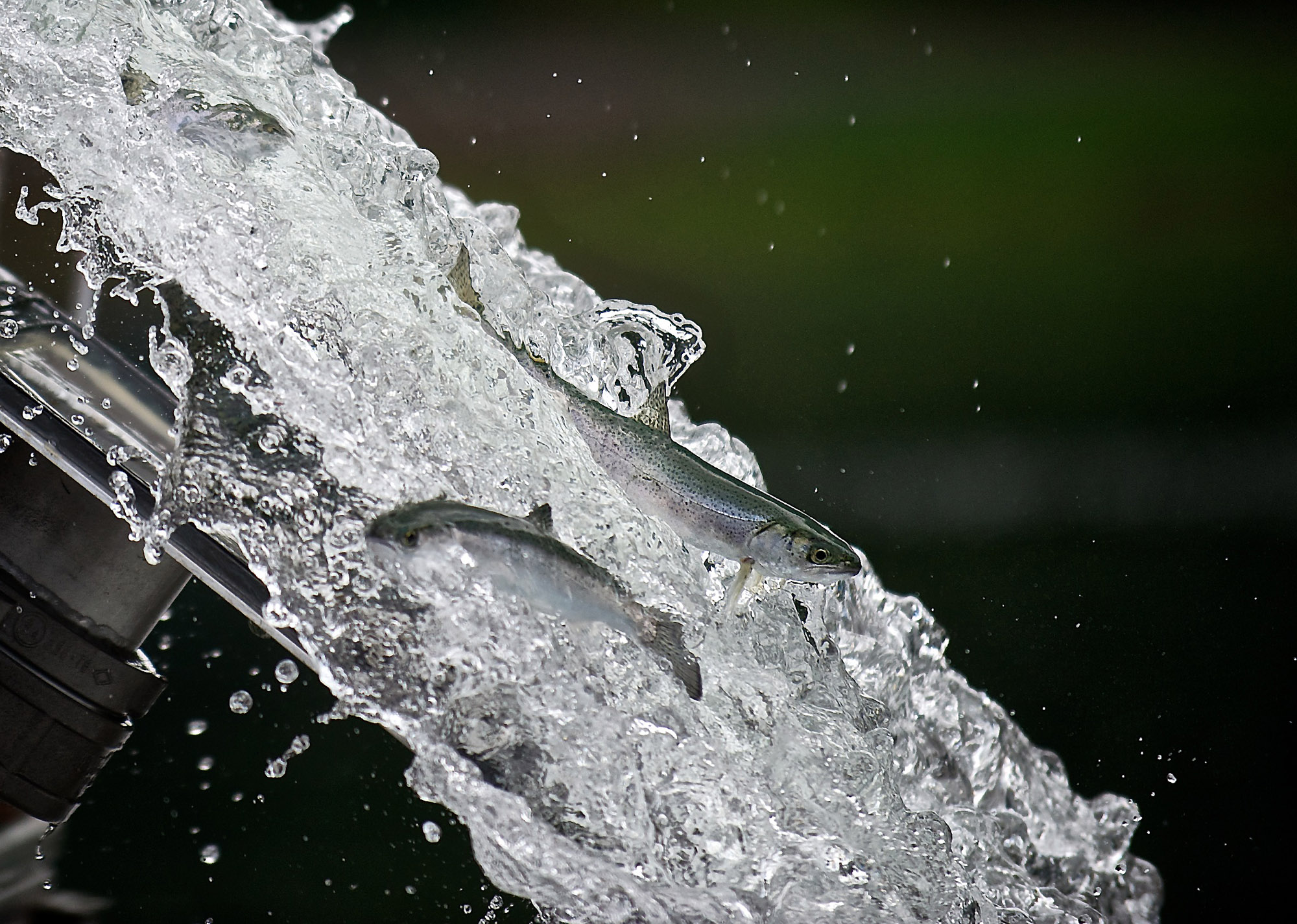COUGAR — Mark Ferraiolo gently grabbed the slightly anesthetized young salmon, identified its species, measured it, and returned it to the water at PacifiCorp’s new $63-million fish collection facility on Swift Reservoir.
After a tanker truck ride of a bit more than an hour, the little coho was released with 104 others in the lower Lewis River at Woodland, free to continue its journey via the Columbia to the Pacific Ocean.
It’s a scenario that hopefully will be replicated a half million times a year eventually as the long process to reestablish salmon and steelhead runs in the upper North Fork of the Lewis River becomes a reality.
As part of the 50-year federal license to operate the three dams on the North Fork of the Lewis, PacifiCorp and Cowlitz PUD are required to reestablish salmon and steelhead in the upper watershed.




